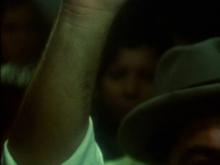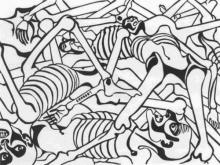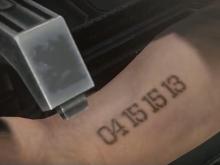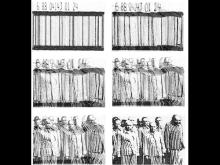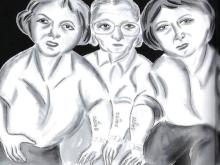Kaddisch nach einem Lebenden
KADDISCH NACH EINEM LEBENDEN, Karl Fruchtmann, FRG 1969
The unique film KADDISCH NACH EINEM LEBENDEN (1969) by German-Jewish director Karl Fruchtmann tells the story of Holocaust survivor Peri who encounters flashbacks from his time in the camp and strolls through Tel Aviv while looking for his friend Bach who survived the Holocaust as a traumatised and broken man. In one of the first scenes of the black-and-white television movie, which was mostly shot on location in Israel, Fruchtmann condenses the complexity of Jewish-Israeli reality interrelating past and present in a significant point-of-view tracking shot and a series of symbolic close-ups. One of those is a shot of the number tattooed on the forearm of a passer-by. Symbolising survival of the Holocaust, the allusive indirect use of the close-up shot from Auschwitz demonstrates how Holocaust memory and trauma is embedded into everyday life in present Israel. In relation to other close-up shots of another survivor and a children's song referring to Hitler the scene refers to the ongoing presence of the past in Israel’s society. The repetition of the close-up shots furthermore emphasises their symbolic notion. The sequence uses an atmospheric sound including some Hebrew language expressions that furthermore add to the associative complexity of the scene.
Through the use of the point-of-view perspective and the constant intercutting of Peri’s face, he is introduced as a twofold witness: a witness of the German atrocities during the Holocaust and a witness of Israel’s presence that is still shaped (and deeply marked) by this traumatic past.
